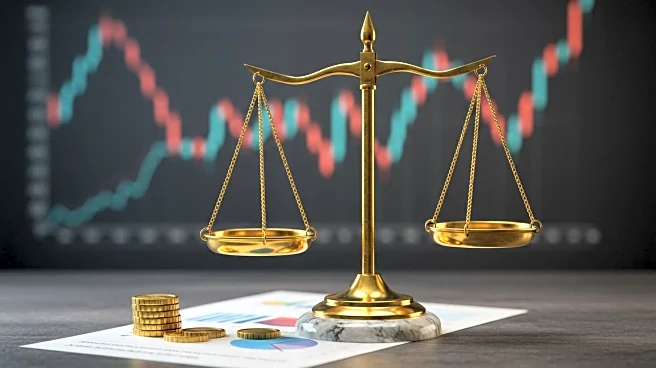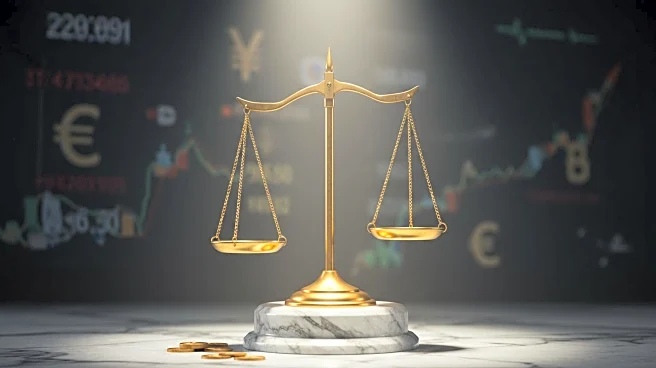What's Happening?
President Trump is exerting pressure on Federal Reserve Chair Jerome Powell to implement aggressive interest rate cuts, potentially reducing rates by up to 300 basis points to 1.25-1.5%. This move is aimed at stimulating the economy by flooding it with cheap money, which could lead to a surge in risk assets and accelerate inflation. The U.S. economy is currently experiencing underlying stress, with the dollar down over 10% since January and core PCE inflation at 2.8%. The debate over interest rates has become central to national economic discussions, especially as the Federal Reserve's Jackson Hole symposium highlights these tensions.
Why It's Important?
The potential rate cuts could have significant implications for the U.S. economy, including increased inflation and destabilization of long-term bond markets. If the Federal Reserve complies with President Trump's demands, it could lead to a rapid increase in inflation, further weakening the dollar and potentially causing a debt servicing crisis. This scenario could also politicize the Federal Reserve, undermining its independence and affecting market confidence. On the other hand, maintaining current policy rates might preserve the Fed's credibility but won't prevent inflation due to existing tariffs and fiscal policies.
What's Next?
If the Federal Reserve decides to cut rates, the consequences could unfold quickly, with inflation potentially rising above 4% by 2026. This could lead to higher interest payments on U.S. debt, increasing fiscal pressure. Alternatively, if the Fed holds steady, inflation may still rise due to tariffs and fiscal expansion, with core PCE inflation drifting up to 3.0-3.2%. The debate over tariffs is causing divisions among policymakers, which could weaken the Fed's resolve in fighting inflation.
Beyond the Headlines
The situation highlights the potential risks of politicizing monetary policy, as seen in other countries where central bank independence was compromised. The ongoing debate over interest rates and inflation could lead to long-term shifts in how the U.S. economy is managed, affecting both domestic and international confidence in U.S. financial stability.











